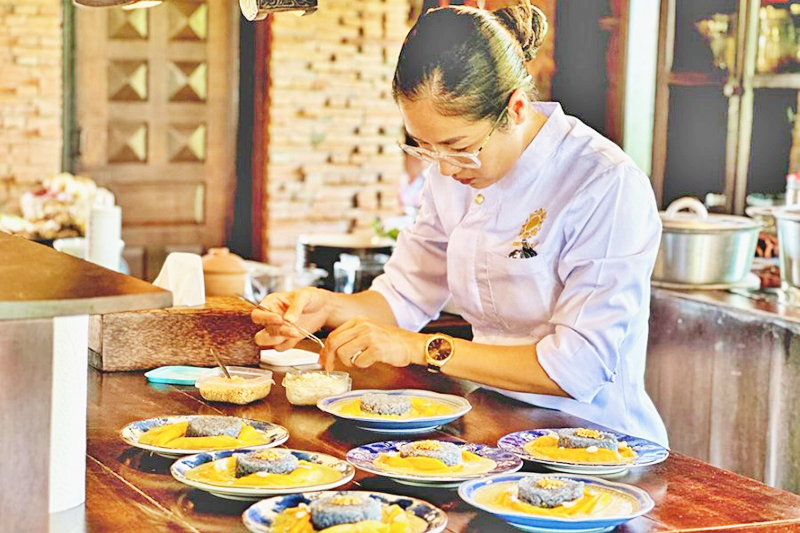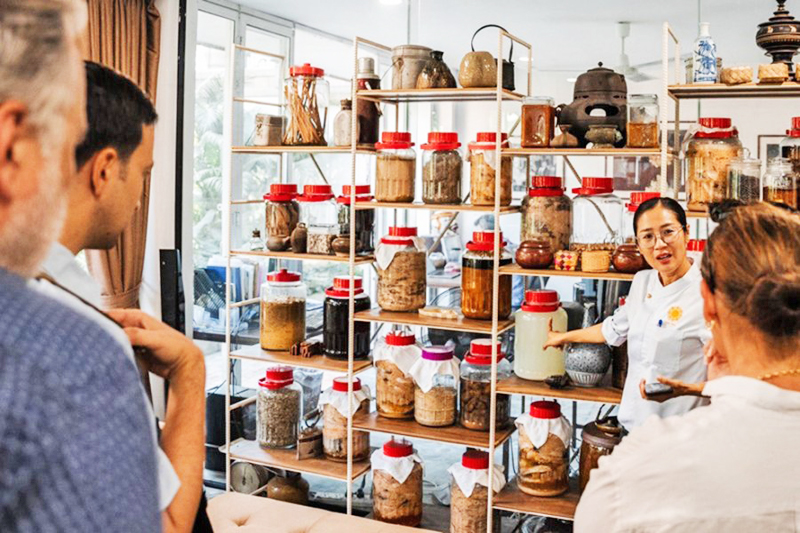PHNOM PENH – When Cambodia’s monsoon rains descend from May to October, the country’s landscape changes, bringing unique culinary ingredients to markets and kitchens across the country.
The month of September provides the perfect time to explore the rich seasonal cuisine of the rainy season.
Ros Rattanak, better known as celebrity Chef Nak, offers a deep connection between the seasonal changes and traditional Khmer cuisine, making the rainy season a period for interesting cuisine.
ENJOY THE RAINY SEASON
The rainy season breathes new life into Cambodia’s rivers, lakes and farmland. According to Chef Nak, the foundation of Khmer food is closely tied to its ingredients, which reflect the season in which they are harvested.
“The taste of food in the rainy season has diversity and is richer than in the dry season. The fresh ingredients we get from the land, forest and water sources during these months are unmatched,” he explained.





Among the most valuable are freshwater fish, such as real tray (small carp), Trey Chhlang (haruan fish) and trey sloeuk russey (catfish), which can be found in abundance when the rains replenish the country’s waterways.
The fish forms the basis of many rainy season dishes, where it tastes better due to the nutrient-rich waters.
Forest herbs and vegetables such as rice herbs (Limnophila conferta)is also a key ingredient in seasonal cuisine.
“There are two types of rice herbs,” said Chef Nak.
“Herbs from the rice fields have a more fragrant smell in the rainy season, awakening the appetite for dishes such as smoked fish with tamarind,” he added.
Most tamarinds and tamarind shoots at this time have a fresh and sour taste where they are essential in most rainy season recipes.
SEASONAL SPECIALTIES
Finding ingredients is an important aspect of cooking in the rainy season, when mushrooms and bamboo shoots appear in forests and wetlands.
The ingredients belong to traditional cuisine such as Samlor Kor Koa mixed vegetable soup combining bamboo shoots, ferns and freshwater fish, all simmered in a flavorful broth prahok (fermented fish paste) and lemongrass.
Another dish that is a seasonal favorite is Samlor Machu Kreung which is a sour soup featuring haruan fish, tamarind and mushrooms.
The balance of sour and spicy flavors makes the dish perfect during cold and wet days.
SHARE THE TRADITION OF MEALS TOGETHER
The rainy season fosters a deeper sense of community and tradition.
As the rain slows down agricultural activities, families in rural areas gather more often to enjoy meals together.
“During the rainy season, food brings people together collectively,” said Chef Nak.
“Families get together while cooking, and food is shared among everyone, strengthening family ties,” he added.
The season also reflects the traditional value of Khmer food. Chef Nak shared a childhood memory when he served chicken to guests which was considered a great honor.
Instead of heavy and complex dishes like meat, Chef Nak suggests going back to simpler seasonal foods like fried fish with pickles or sour fish soup with shrimp and vegetables.
The lighter dish is not only in keeping with tradition but also highlights the delights of the rainy season.
NATURAL INGREDIENTS
Certain herbs, such as balsam and sage, thrive especially in wet conditions, where they can contribute to the richness of rainy season cuisine.
Chef Nak also mentioned the importance Java Cola i.e. plants whose fruits, flowers and buds are able to add their own flavor to various dishes at this time.
Insects, such as crickets and spiders were also once part of the rainy season diet.
“These insects are really tasty and fragrant when cooked,” said Chef Nak while reminiscing and emphasizing how Khmer cuisine is closely related to the environment. – ANN/The Phnom Penh Post

